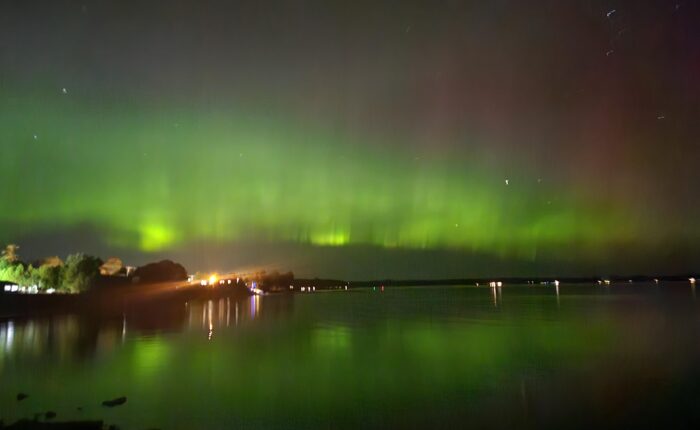
Discover Cave Point Park in Door County Wisconsin – stunning limestone caves, crystal-clear waters, and amazing outdoor activities. Your complete guide to this natural wonder.
Cave Point Park is Door County’s crown jewel. This stunning natural attraction sits along Lake Michigan’s eastern shore. Every year, thousands of visitors come to see its famous limestone cliffs and crystal-clear waters.
The park offers something for everyone. You can kayak through sea caves, hike scenic trails, or simply enjoy the breathtaking views. As a result, it’s become one of Wisconsin’s most photographed destinations.
How Cave Point Park Was Formed
Ancient Seas Created the Foundation
Cave Point’s story begins 425 million years ago. Back then, Wisconsin was covered by a warm, shallow sea. Over millions of years, tiny sea creatures died and formed limestone layers.
Eventually, this limestone became part of the Niagara Escarpment. This rocky ridge stretches from New York all the way to Wisconsin. You can see similar formations at Niagara Falls.
Lake Michigan Carved the Caves
The caves that give the park its name formed over thousands of years. Lake Michigan’s waves constantly hit the limestone cliffs. Slowly, the water wore away the softer rock.
Furthermore, each storm continues this natural sculpting process. The waves create deep undercuts and caverns. Some caves extend far back into the cliffs.
Crystal Clear Waters
The water at Cave Point has an amazing blue-green color. This comes from calcium carbonate dissolved from the limestone. Consequently, it makes the water look almost tropical.
The clarity is incredible too. You can see deep underwater rock formations. Many people compare it to Caribbean waters.
Wildlife and Plants at Cave Point
Rare Cliff Plants
The limestone cliffs support unique plant life. Many species are rare in Wisconsin. In fact, some are arctic plants left over from the ice age.
Northern white cedar trees grow right from the rock. These twisted trees have adapted to harsh conditions. They’re constantly battered by wind and spray.
Lake Michigan Fish
The waters around Cave Point teem with fish. Lake trout and salmon swim in the deeper areas. Similarly, whitefish spawn in the underwater caves.
The clear water makes it perfect for fishing. Anglers often catch their limit here. The rocky bottom provides great fish habitat.
Birds and Wildlife
Many bird species visit Cave Point throughout the year. Gulls and terns are common sights. Occasionally, bald eagles hunt along the shoreline.
During migration seasons, you might spot rare birds. The cliffs provide nesting sites for several species. Meanwhile, the forest behind the park hosts woodland birds.
Best Things to Do at Cave Point Park
Kayaking Through Sea Caves
Kayaking is the most popular activity at Cave Point. You can paddle right into the sea caves. The experience is truly magical.
Several Door County outfitters offer guided tours. They provide all the equipment you need. Tours are available for all skill levels.
The best time to kayak is during calm conditions. Summer mornings are usually perfect. However, always check weather conditions first.
Hiking the Scenic Trails
Cave Point connects to excellent hiking trails. The main trail links to Whitefish Dunes State Park. It’s about a 2-mile walk through beautiful forest.
The overlook trails offer stunning lake views. You can see for miles on clear days. The trails are well-maintained and family-friendly.
Spring and fall are the best hiking seasons. You’ll avoid summer crowds. Additionally, the fall colors are spectacular.
Photography Opportunities
Cave Point is a photographer’s paradise. The limestone cliffs create dramatic compositions. Sunrise and sunset offer the best lighting.
Storm photography is popular here. Massive waves crash against the rocks. The spray can reach 30 feet high.
Winter brings unique photo opportunities. Ice formations create natural sculptures. Meanwhile, the frozen caves look like crystal palaces.
Swimming and Cliff Jumping
Swimming is popular during summer months. The water is typically cold but refreshing. The rocky bottom provides good footing.
Cliff jumping used to be common here. However, it’s now discouraged for safety reasons. The rocks below can be dangerous.
Always use caution around the water. Lake Michigan conditions can change quickly. Never swim alone.
Scuba Diving Adventures
The underwater caves attract scuba divers from across the Midwest. You need proper certification to dive here. The conditions can be challenging.
The underwater visibility is excellent. You can explore cave systems that extend inland. Marine life is abundant in these protected waters.
Several dive shops in Door County offer guided trips. They know the best and safest spots. Equipment rental is available.
Cave Point’s Rich History
Native American Heritage
Local tribes considered Cave Point sacred ground. The Potawatomi and Menominee used the area for ceremonies. The caves served as navigation landmarks.
Archaeological evidence shows centuries of use. Native Americans traveled these waters by canoe. The distinctive cliffs helped them navigate.
Early European Settlement
European settlers arrived in the 1800s. They recognized the area’s unique beauty. However, the remote location limited development.
The park was officially established in 1943. Door County purchased the original 19-acre parcel. It became one of Wisconsin’s first county parks.
Modern Cultural Impact
Cave Point has inspired countless artists. Painters and photographers capture its beauty. The park appears in galleries throughout the region.
It’s become a symbol of Door County. Tourism brochures always feature the caves. Therefore, the park draws visitors from around the world.
Conservation Efforts and Challenges
Managing Heavy Visitor Traffic
Over 250,000 people visit Cave Point each year. This heavy use creates conservation challenges. Trails suffer from erosion and vegetation damage.
The county has built boardwalks to protect sensitive areas. Designated viewing areas prevent cliff edge damage. Rangers monitor visitor impact daily.
Peak season crowds can overwhelm the small park. Parking fills up quickly on summer weekends. Consequently, early morning visits are recommended.
Climate Change Impacts
Rising Lake Michigan water levels accelerate shoreline erosion. This threatens the park’s infrastructure. Some trails have been relocated inland.
Temperature changes affect the unique cliff ecosystems. Rare plants may not survive warming conditions. Scientists monitor these changes closely.
Extreme weather events are becoming more common. Storms now cause more damage than in the past. Recovery takes longer each time.
Protection Strategies
The county works with state agencies on conservation. They’ve expanded protected areas around the park. This creates buffer zones against development.
Volunteer programs engage local residents. They help with trail maintenance and invasive species removal. Community involvement is essential.
Educational programs teach visitors about the ecosystem. Understanding leads to better protection. Furthermore, school groups regularly visit for science lessons.
Planning Your Visit to Cave Point Park
Best Times to Visit
Summer offers the warmest weather and best swimming conditions. However, this is also the busiest season. Arrive early to avoid crowds.
Spring and fall provide excellent hiking weather. The crowds are smaller then. Fall colors are spectacular in the surrounding forest.
Winter transforms Cave Point into a frozen wonderland. Ice formations create unique photo opportunities. Dress warmly and use caution on icy surfaces.
Getting There
Cave Point Park is located on Cave Point Drive in Jacksonport. It’s about 15 minutes north of Sturgeon Bay. The park is well-marked with signs.
Parking is limited to about 50 cars. The lot fills up quickly on busy days. Therefore, consider carpooling or arriving early.
Public transportation isn’t available to the park. You’ll need a car to get there. The roads are paved and well-maintained.
What to Bring
Bring comfortable hiking shoes with good grip. The limestone can be slippery when wet. Avoid flip-flops or sandals.
Pack plenty of water and snacks. There are no facilities at the park. The nearest restaurants are in Jacksonport.
Don’t forget your camera. The scenery is incredible. A waterproof case is recommended for kayaking.
The Future of Cave Point Park
Sustainable Tourism Plans
Park managers are working on sustainable tourism strategies. They want to balance access with conservation. New technologies help monitor visitor impact.
Virtual tour options are being developed. These provide educational experiences without physical visits. They’re especially useful during peak seasons.
Digital resources help with trip planning. Real-time parking updates are available. This reduces overcrowding and improves visitor experience.
Community Involvement
Local businesses support conservation efforts. They understand that natural beauty drives tourism. Many contribute funding for park improvements.
Residents serve as volunteer stewards. They help maintain trails and monitor wildlife. This community involvement is crucial for long-term success.
Educational partnerships with schools continue to grow. Students learn about ecology and conservation. They become the next generation of park protectors.
Cave Point Park represents the best of Door County’s natural heritage. Its stunning beauty and unique ecosystem make it truly special. With proper management and community support, it will continue inspiring visitors for generations to come.
The park offers something for everyone, from adventure seekers to nature lovers. Whether you’re kayaking through sea caves or simply enjoying the view, Cave Point creates unforgettable memories. Plan your visit today and discover why this hidden gem is considered one of Wisconsin’s greatest natural treasures.

